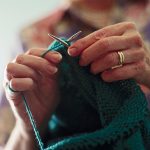
Medicare will now cover the popular weight-loss drug Wegovy if patients using it also have heart disease, U.S. officials announced Thursday. The move comes after the U.S. Food and Drug Administration approved drugmaker Novo Nordisk’s application to add cardiovascular benefits to the medicine’s label earlier this month. As a result, the U.S. Centers for Medicare and Medicaid Services (CMS) said it has informed insurers that provide Medicare Part D drug plans that they could cover the medication if it is approved for another use. “CMS has issued guidance to Medicare Part D plans stating that anti-obesity medications [AOMs] that receive FDA approval for an additional medically accepted indication can be considered a Part D drug for that specific use,” CMS said in a statement, CNN reported. Part D plans could begin covering the drug “some time this year,” Tricia Neuman, a Medicare policy specialist at KFF, told the Associated Press. “Medicare plans may be reluctant to move quickly to cover Wegovy given its relatively high price, particularly because they won’t be able to adjust premiums before next year,” she said. Wegovy costs just over $1,300 a month. Even if plans do allow coverage, they may still require higher out-of-pocket fees, prior authorizations or step therapy, where a patient must try a lower-cost drug before proceeding to the new treatment, Neuman noted. Wegovy is one of four popular… read on > read on >


















